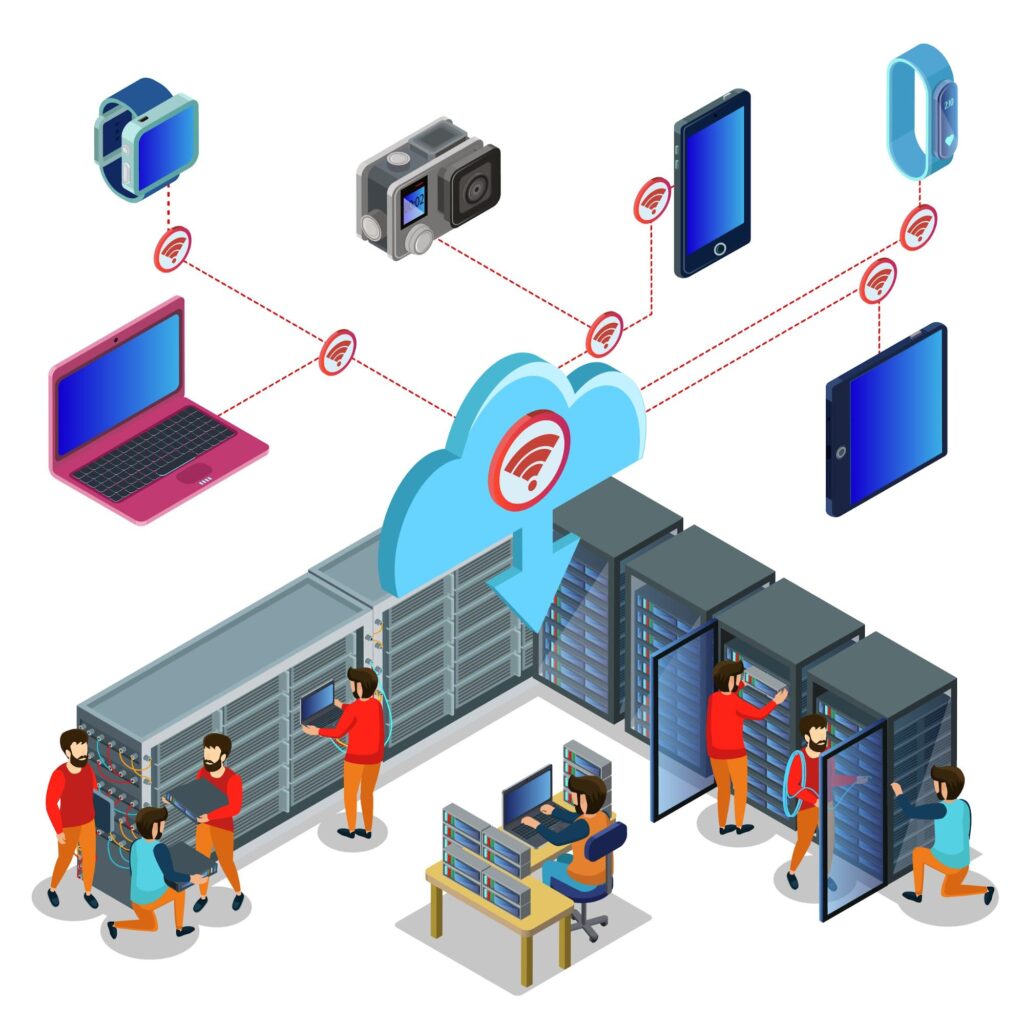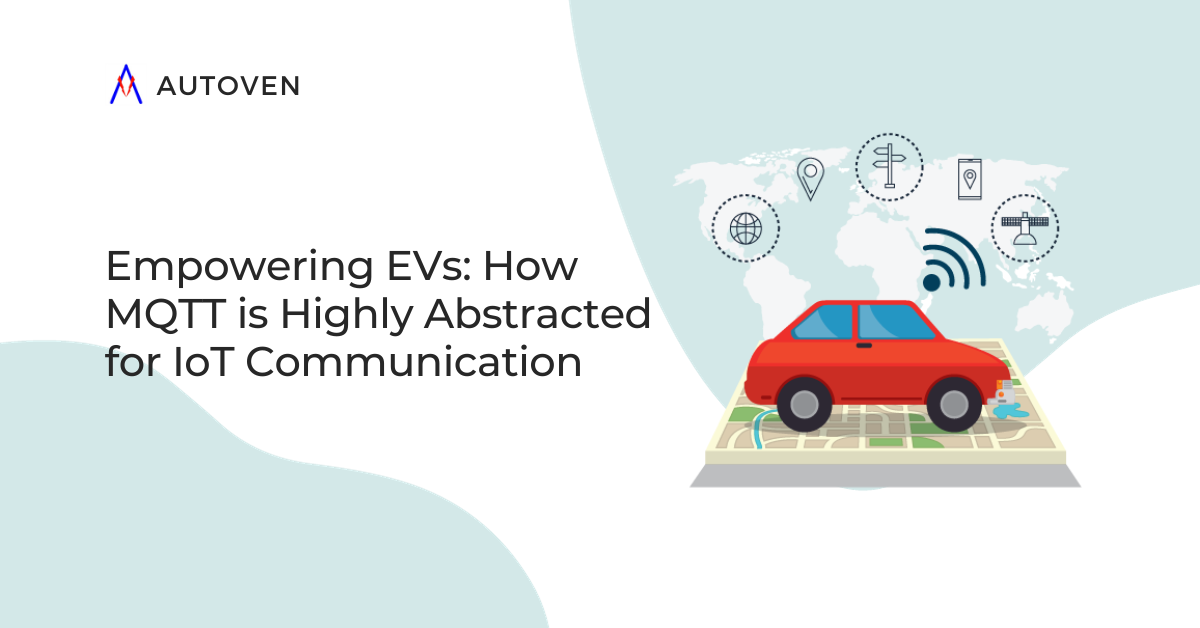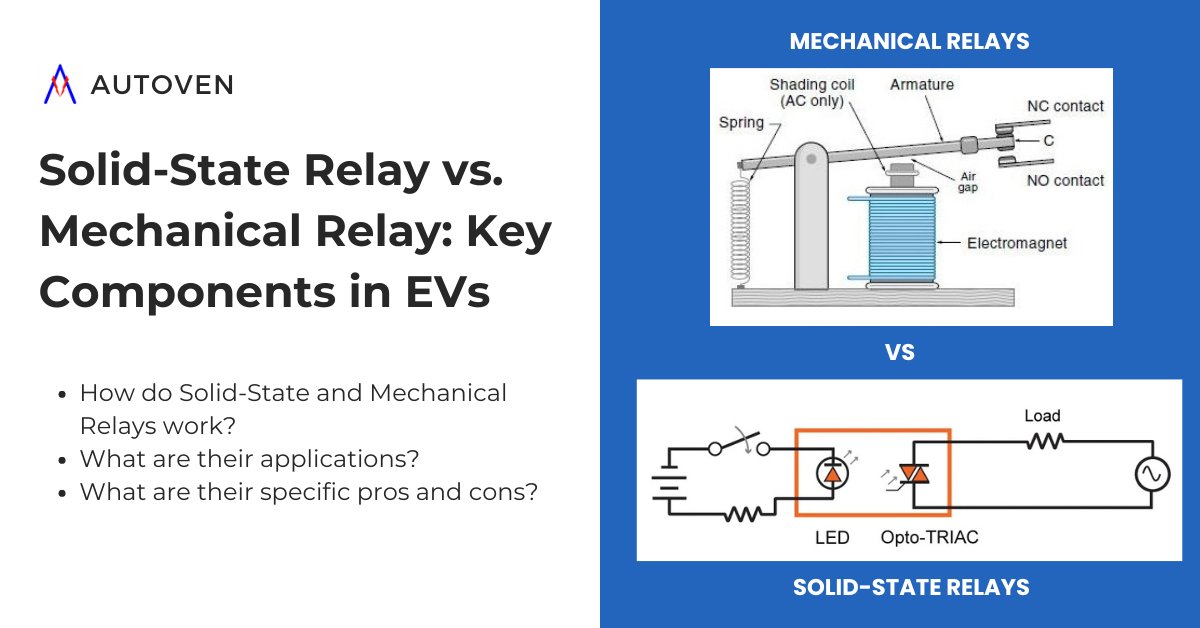The Internet of Things (IoT) has taken center stage in the rapidly evolving landscape of interconnected devices. Industries have transformed with the ability to share data over the internet seamlessly. Thus, utilizing the right communication protocol becomes one of the cornerstones of optimization. MQTT (Message Queuing Telemetry Transport) has emerged as the catalyst, outperforming traditional TCP/IP protocols. While TCP/IP is the most widely used internet communication protocol, it lacks some key capabilities required in IoT applications. In this blog, we’ll dissect the capabilities of MQTT, exploring how it influences the communication, efficiency, and performance of electric vehicles way more than TCP/IP protocols can.
TCP/IP: The Conventional Choice
TCP/IP, the foundational communication protocol of the internet, has played an indispensable role in connecting the world for decades. Its robustness and reliability have made it the go-to choice for various networking applications. However, when it comes to the unique demands of the Internet of Things (IoT), TCP/IP may not be the complete solution. TCP/IP relies on direct point-to-point connections, predominantly focusing on the accuracy of data transfer over the internet. Meanwhile, IoT requires protocols that efficiently handle many interconnected devices, often with limited resources. Thus, TCP/IP needs additional capabilities to make it suitable for the web of communication in EVs. Achieving the same level of adaptability offered by MQTT while building an application on TCP/IP is possible, although it will incur additional computational overhead and meticulous application design. Moreover, with the availability of a categorically designed protocol, engaging in building one seems redundant.

Why MQTT?
Electric vehicles represent the mobility innovation paradigm of the 21st century, filled with intricate systems comprising sensors, control units, and batteries. These systems require seamless information exchange with analytical and database servers via the Internet. Some critical decisions are made based on the data received from the vehicles, making infallible and efficient communication, often using limited resources, extremely vital. TCP/IP protocol does meet these requirements with design customizations. However, MQTT, the protocol in our spotlight, is custom-designed to cater to these exacting demands.
Let’s see how-
1. Real-time Data Flow: Harmonizing EV Communication
Visualize an EV as an orchestra of components—batteries, motors, sensors—all attuned to real-time performance. The data from this intricate system needs to be efficiently acquired and stored so that post-analytics, intelligent insights can be drawn from it. MQTT’s publish/subscribe model facilitates seamless bidirectional communication between vehicles and servers. A central MQTT broker hosts topics (data sources, in this case, EVs) and servers without direct links. Clients can subscribe to relevant topics, keeping communication fast and efficient rather than overloading with information. MQTT also keeps communication bidirectional, allowing servers to publish back to the topics when required.
2. Lean, Green, and Efficient
In the realm of EVs, efficiency is non-negotiable. MQTT protocol utilizes a shorter data packet compared to other protocols. Moreover, the data is stored as binary bytes, leading to a much smaller data footprint. This lightweight architecture minimizes computational overhead, conserving precious power drawn from the battery. It also keeps the servers clear from data overload.
3. Quality of Service (QoS): Precision Delivery
EVs demand precision in data transmission. MQTT offers three Quality of Service (QoS) levels—0, 1, and 2—that ensure data arrives exactly when required.
- QoS 0 (At most once): This level ensures that messages are delivered but provides no acknowledgment or guarantee of receipt. It’s suitable for scenarios where some message loss is acceptable.
- QoS 1 (At least once): This level guarantees that messages are delivered at least once but may be delivered multiple times. It suits applications where message duplication is acceptable, but message loss isn’t.
- QoS 2 (Exactly once): This is the highest level of assurance, ensuring that messages are delivered exactly once. It’s suitable for applications where message duplication is unacceptable, such as critical control systems.
4. Adept with Multiple Data Types
With systems of various sensors, motor controllers, battery packs, and more, the data from EVs comes in all shapes, sizes, and formats. The communication must be adept with multiple data types to ensure the assured data communication from each system. MQTT currently offers a spectrum of data types ranging from two-bit and four-bit integers to UTF-8 string pairs.
5. Scaling for EV Fleets
The surge in electric vehicle fleets requires scalability. MQTT can seamlessly accommodate a flourishing array of vehicles and components because of its application layer architecture. The ease of setup and scale-up makes it an ideal choice for efficient fleet management. It adapts to your evolving needs, whether managing a handful of vehicles or an entire fleet.

Putting MQTT into Action
Let’s delve into a brief exposition of the level of abstraction the MQTT protocol offers within the context of electric vehicles.
1. Lightweight Design
TCP/IP is more resource-intensive than MQTT due to its comprehensive nature. While MQTT stores control units as binary bytes, TCP/IP uses bulky text strings. This extra resource consumption can affect the overall efficiency of EVs.
2. Data Reliability
While TCP/IP does provide reliability in data transfer, it may not offer the same flexibility and customization as MQTT regarding data delivery. Without QoS, the surety of re-transmission and loss-less data delivery becomes extremely tough and undesirable for EVs. Whether for battery management, charging control, or firmware updates, MQTT’s QoS guarantees reliability while maintaining communication efficiency.
3. Bidirectional Communication
TCP/IP intrinsically prevents servers from initiating communication and publishing messages. MQTT allows servers to initiate communication, increasing vehicle and server data flow flexibility and adaptability, enabling a list of additional services specific to EVs, like remote locking and unlocking.
4. Superior Data Handling Capability
Unlike MQTT, TCP/IP natively only supports ASCII characters. Although handling multiple data types can be achieved with TCP/IP, it may not be as effortless as MQTT. This capability empowers sourcing data from different devices in the EV.
5. Retained Messages
A retained message is stored in the broker with its corresponding QoS for the topic. Each client will receive this retained message as soon as it subscribes to that topic. Retained messages are essential in the EV domain, as some data points are critical for the vehicle’s health. This functionality of the MQTT protocol makes it stand apart from other protocols.
The Road Ahead for MQTT:
MQTT offers a compelling set of advantages for IoT-based communication, making it a preferred choice for many IoT deployments. As the electric vehicle landscape continues its steep ascent, MQTT will play an increasingly pivotal role. MQTT is the protocol of choice for EVs due to its lightweight design, real-time capabilities, efficiency, and scalability. Embracing MQTT will empower EV OEMs to optimize and streamline data transfer from edge to cloud, where efficient communication is key to success. Don’t stand on the sidelines— adopt MQTT today and position yourself at the forefront of the electric vehicle revolution.



